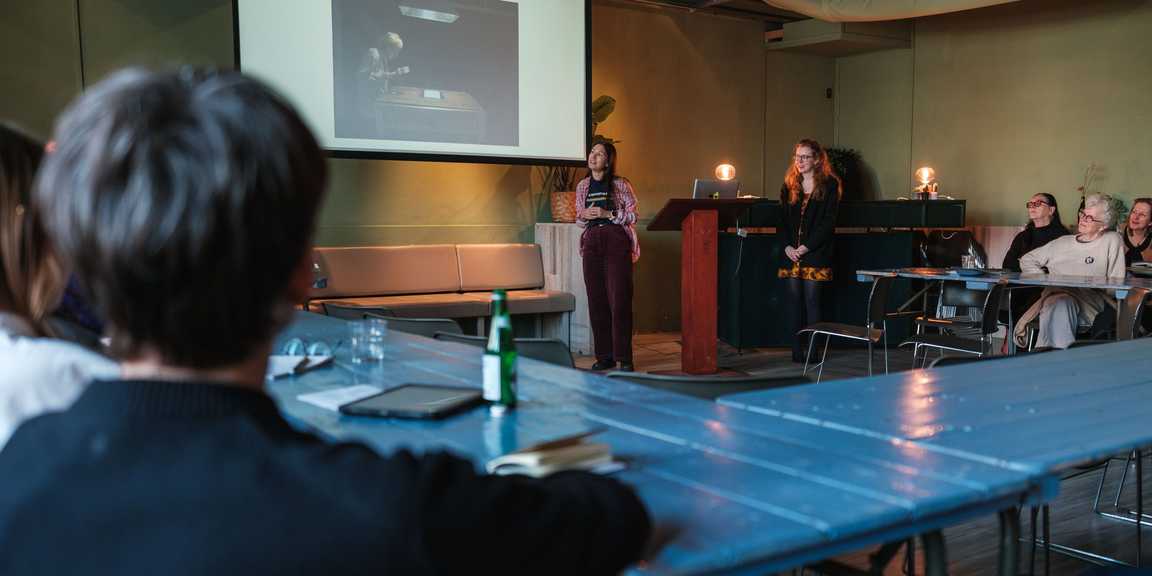
Amiga Artist List – Project Summary
Amiga Artist List tracing Dutch digital art and artists for preservation and access
LI-MA’s AMIGA NU project investigated the overlooked histories of Amiga-based digital art in the Netherlands during the 1980s and 1990s. With support from the Cultuurfonds, this research focused on identifying, preserving, and making accessible early computer artworks – bridging gaps in the national collection and shaping future strategies for digital art care.
AMIGA NU project
The production and practice of computer-based work in the Netherlands during the 80s and 90s, with a focus on Amiga, was thoroughly investigated by LI-MA from October 2024 to April 2025 with funding provided by het Cultuurfonds. Since 1978, a unique collection and archive of (Dutch) media art has been built up at LI-MA. The collection has developed into the media art collection of the Netherlands, being one of the most respected in Europe. Many of the digital artworks from the 80s and 90s in the collection have little information regarding the original manifestation. As a result, it is not only unclear which hardware and software these artworks were made with, but also not entirely clear which early digital works are present in the collection. Thus, it is crucial to investigate the relevant Dutch digital artworks from that time period. After all, the generation of artists and technicians active in those years is still available, but we should act now to ensure the knowledge culminated from that generation about artists, artworks, and technology will not be lost.
Summary of Project Goals
The AMIGA NU research project aimed to trace and fill the gaps in the collection formation of early digital art. The project also strove to collect relevant information about digital works from the 80s and 90s and make them more available to the public. The goal of the research was also to answer the question of how these works can be presented in a new and permanent way.
The main research questions focused on uncovering the most important Dutch computer-based works from the 80s and 90s in terms of art history and innovative technology, along with where they are located. From these works, it was further explored which are in the LI-MA collection, and which may be elsewhere with private collectors, artists, or institutions. The next question centred around examining the extent to which the computer-based artworks from the 80s and 90s - largely made with Commodore Amiga - can (and may) be changed to allow the work to continue to exist. Lastly, the question of how an artwork made with Amiga can be preserved for the long term sustainably, and allow for presentation in such a way that it remains accessible to the public.
Summary of Project Outputs
Carried out by LI-MA’s Junior Conservator Olivia Brum and supervised by Director Gaby Wijers, the results of the AMIGA NU research project were multi-faceted, encompassing archives, identification, preservation, presentation, and collaboration.
- The first project output was a detailed inventory of leading international computer-based artists with relevant artworks, resulting in the 80s and 90s International Computer Artist Index. From this, a more specific 80s and 90s International Amiga Artist List was created that included artists who were confirmed to work with Amiga during this time.
- To take things a step further, particular artworks were uncovered and compiled to produce a Short-list of Recommendations of Artworks that would aid in filling the gaps in the LI-MA collection.
- A Questionnaire to Identify Amiga Artworks was developed to help decipher whether a computer-based artwork was made specifically with an Amiga computer.
- Oral History and Interviews with Amiga experts were conducted and played a large role in gaining insights into the Amiga network in the 80s and 90s.
- The Conservation and Future Presentation of Amiga artworks was thoroughly examined, especially using the artworks of artist Raul Marroquin. Updated protocols were created to help assist with preserving these artworks outside of their original hardware.
- In terms of outreach, an exchange in the form of an Experts’ Round Table entailed a virtual discussion that dove deep into the technology with great enthusiasm.
- Additional outreach included a Transformation Digital Art 2025 workshop in collaboration with Zentrum für Kunst und Medien Karlsruhe (ZKM), involving Amiga case studies and discussions with Amiga artists, which rounded out the project.
- Online publications of the research findings were shared across various platforms. Specifically, the AMIGA NU project page, Knowledge Base, and the Mediakunst.net Blogs page.
Header image: Morgan Stricot, Olivia Brum at Transformation Digital Art 2025. Photo by Alex Heuvink.






